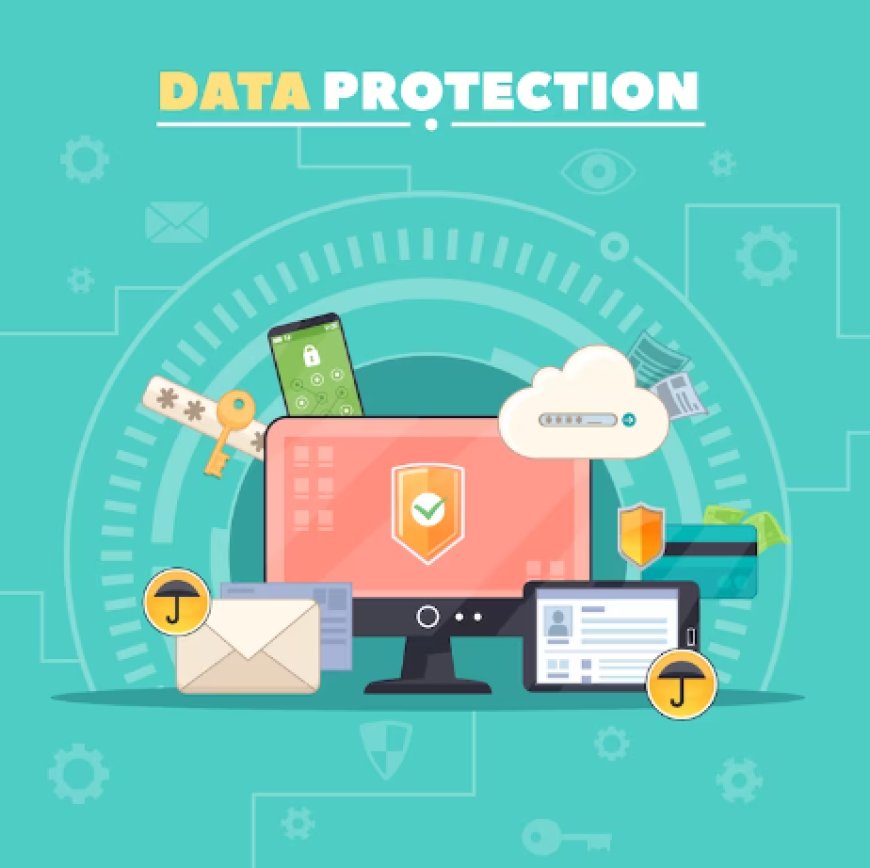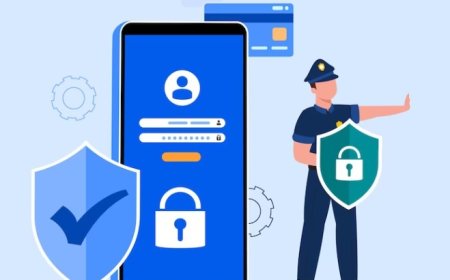Protecting Your Valuable Data: Data Loss Prevention (DLP)
Secure data loss prevention, encryption, cybersecurity, compliance, storage, backup, risk management, threats, solutions, and strategies.

Data Loss Prevention (DLP) refers to a set of strategies, policies, and technologies aimed at protecting sensitive data from loss, unauthorized disclosure, or accidental leakage. DLP solutions help organizations identify, monitor, and prevent the unauthorized transfer or access of sensitive data, both within the organization and externally. By implementing effective DLP measures, organizations can safeguard their critical information, maintain regulatory compliance, and mitigate the potential financial and reputational damage associated with data breaches or data loss incidents.
The importance of DLP in safeguarding sensitive data:
-
DLP helps prevent unauthorized access, leakage, or theft of sensitive data, reducing the risk of data breaches.
-
DLP solutions assist organizations in meeting data protection regulations and industry compliance standards.
-
DLP measures help protect valuable intellectual property, trade secrets, and confidential business information from unauthorized disclosure or theft.
-
Effective DLP implementation helps minimize financial losses and reputational damage that can arise from data breaches or data loss incidents.
-
By safeguarding sensitive customer information, organizations can maintain trust and confidence among their customers, clients, and business partners.
-
DLP enables organizations to proactively identify and mitigate potential risks to sensitive data, rather than reacting after a security incident occurs.
The purpose of this blog post is to provide readers with a comprehensive understanding of Data Loss Prevention (DLP) and its significance in safeguarding sensitive data. It aims to explore the key components of a DLP strategy, highlight the benefits of implementing DLP measures, discuss strategies for effective implementation, and address challenges and considerations in DLP. The blog post also aims to offer best practices and insights to help organizations enhance their data protection efforts and maintain the security and integrity of their valuable information assets.
Understanding Data Loss Prevention
What is Data Loss Prevention?
Data Loss Prevention (DLP) refers to a comprehensive approach to protect sensitive data from unauthorized disclosure, leakage, or loss. It involves implementing a combination of policies, technologies, and processes to identify, monitor, and control data movements within an organization's network.
Key components of a DLP strategy
-
Identify and categorize sensitive data throughout the organization.
-
Continuously monitor data flows to detect and prevent unauthorized access or leakage.
-
Establish protocols for responding to and remediating data breaches or incidents.
-
Develop comprehensive policies and rules to govern data handling and access.
-
Educate employees about data protection policies and best practices.
-
Implement encryption and access controls to protect data from unauthorized disclosure.
-
Conduct thorough investigations of data loss incidents to understand their causes and take appropriate measures to prevent future occurrences.
-
Continuously assess and improve the effectiveness of DLP measures through regular audits and updates.
Common challenges in implementing DLP can be summarized as follows:
-
Balancing security and productivity
-
Handling encrypted data
-
Dealing with false positives and negatives
-
Employee resistance and awareness
-
Evolving threats and technologies
Benefits of Data Loss Prevention
Protection of sensitive data from loss or unauthorized disclosure
DLP measures help safeguard sensitive data, such as personally identifiable information (PII), intellectual property, and financial records, from accidental leaks, insider threats, or external attacks. By implementing controls and monitoring mechanisms, organizations can maintain the confidentiality and integrity of their valuable data assets.
Compliance with data privacy regulations
DLP assists organizations in meeting regulatory requirements related to data privacy, such as the General Data Protection Regulation (GDPR) and the California Consumer Privacy Act (CCPA). By implementing DLP measures, organizations can ensure they have the necessary safeguards in place to protect personal data and demonstrate compliance with applicable data protection regulations.
Prevention of financial and reputational damage
Data breaches and incidents of data loss can have severe financial and reputational consequences for organizations. Implementing DLP helps mitigate the risk of data breaches, reducing potential financial losses associated with legal liabilities, breach notification costs, and reputational damage.
Preservation of competitive advantage
Organizations that effectively implement DLP measures gain a competitive edge by demonstrating their commitment to data protection and security. Customers, partners, and stakeholders are more likely to trust and prefer organizations that prioritize the protection of sensitive information, resulting in improved customer relationships, business opportunities, and market competitiveness.
Strategies for implementing Data Loss Prevention (DLP)
Establishing a data protection policy
-
Develop a comprehensive policy that outlines data handling guidelines, access controls, and data classification.
-
Clearly define roles and responsibilities for data protection within the organization.
Implementing technical controls and encryption
-
Deploy DLP solutions that provide real-time monitoring and enforcement of data security policies.
-
Utilize encryption technologies to protect sensitive data at rest and in transit.
-
Implement access controls and authentication mechanisms to restrict data access to authorized users.
User awareness and training programs
-
Conduct regular training sessions to educate employees about data protection policies, best practices, and potential risks.
-
Promote a culture of data security and encourage employees to report any suspicious activities or incidents promptly.
Regular monitoring and auditing of data access and transfers:
-
Implement monitoring tools to track data access, transfers, and usage patterns.
-
Conduct regular audits to assess the effectiveness of DLP measures and identify areas for improvement.
-
Establish incident response procedures to promptly address and mitigate any data breaches or incidents.
Key Technologies and Tools for Data Loss Prevention
Data Loss Prevention (DLP) relies on various technologies and tools to effectively protect sensitive data. Some key technologies and tools for DLP include:
Data classification and labeling tools
These tools help categorize and label data based on its sensitivity and importance. They enable organizations to identify and apply appropriate security controls and handling procedures to different types of data.
Data loss monitoring and prevention solutions
DLP solutions provide real-time monitoring and analysis of data flows, both within the organization and at network boundaries. They detect and prevent unauthorized access, data leaks, and policy violations, helping organizations maintain data confidentiality and integrity.
Encryption and data protection technologies
Encryption technologies play a crucial role in securing data at rest and in transit. They ensure that even if data is accessed or intercepted, it remains unreadable without the proper encryption keys. Encryption safeguards sensitive data from unauthorized disclosure, mitigating the impact of potential breaches.
User behavior analytics and anomaly detection tools
These tools analyze user behavior patterns and network activities to detect anomalies and potential insider threats. By monitoring user activities, these tools can identify unusual data access or transfer behaviors that may indicate unauthorized or malicious activities.
Best Practices for Effective Data Loss Prevention
-
Implement a comprehensive data protection policy that outlines data handling guidelines, access controls, and data classification.
-
Conduct regular data inventory and classification to identify and prioritize sensitive data.
-
Deploy data loss monitoring and prevention solutions to detect and prevent unauthorized data access or transfer.
-
Utilize encryption technologies to protect sensitive data at rest and in transit.
-
Implement strong access controls and authentication mechanisms to restrict data access to authorized users.
-
Conduct regular user awareness and training programs to educate employees about data protection policies and best practices.
-
Establish incident response procedures to promptly address and mitigate any data breaches or incidents.
-
Conduct regular audits and assessments to evaluate the effectiveness of DLP measures and identify areas for improvement.
-
Stay updated with evolving threats and technologies to adapt DLP strategies accordingly.
-
Ensure compliance with data privacy regulations and industry standards.
Challenges and Considerations in Data Loss Prevention
-
Managing and protecting data across diverse platforms, devices, and cloud environments can pose challenges in implementing consistent DLP measures.
-
Balancing data security with employee productivity and preventing unintentional data breaches requires addressing user behavior and raising awareness.
-
Proper implementation of encryption and secure key management is crucial for effective DLP, but it can be challenging to ensure consistent application and protection.
-
Accurate and consistent data classification is essential for effective DLP, but it can be a complex and time-consuming process, especially for large organizations.
-
Data loss prevention strategies need to adapt to evolving cyber threats and new attack vectors that may exploit vulnerabilities in data handling and storage.
-
Insider threats, intentional or unintentional, can pose significant challenges in detecting and preventing data breaches, as authorized users already have access to sensitive data.
-
Striking the right balance between data security measures and maintaining efficient business operations and user experience can be a challenge.
-
Meeting regulatory compliance obligations, such as data privacy regulations, can be complex and require ongoing effort and monitoring.
Considering these challenges and factors is crucial for organizations to develop effective and sustainable data loss prevention strategies that align with their specific needs and requirements.
Data Loss Prevention (DLP) plays a critical role in safeguarding sensitive data, ensuring compliance with regulations, and preventing financial and reputational damage. The key takeaways for organizations implementing DLP measures include establishing comprehensive data protection policies, deploying technical controls, conducting user awareness programs, and regularly monitoring data access and transfers.
Looking ahead, future trends and considerations in DLP include the increasing complexity of data environments, addressing evolving threats and insider risks, and aligning DLP strategies with emerging technologies such as cloud computing and Internet of Things (IoT). By staying proactive and adapting to these trends, organizations can enhance their DLP capabilities and protect their valuable data assets effectively.



































